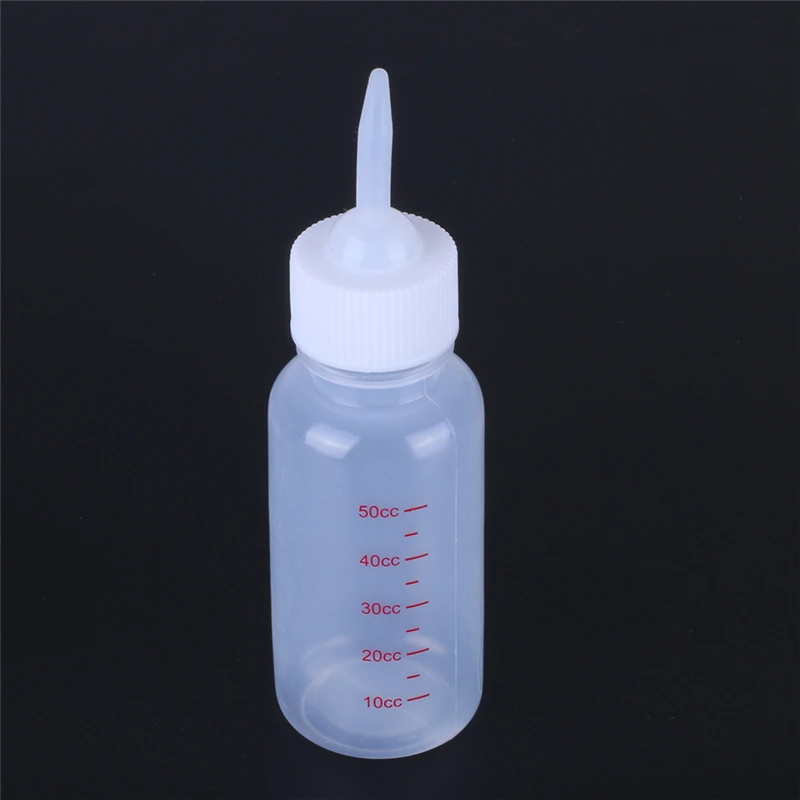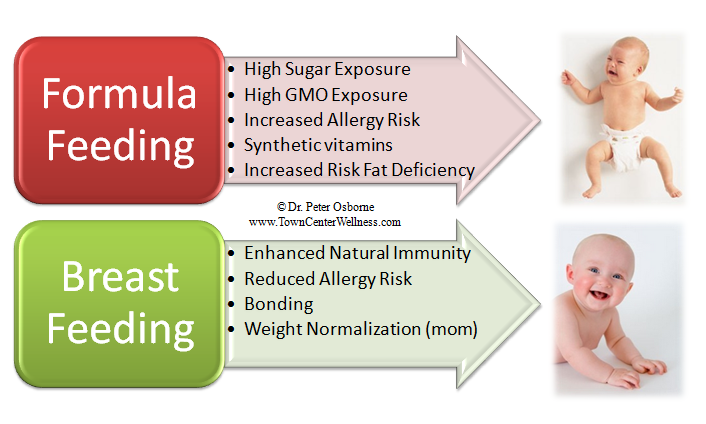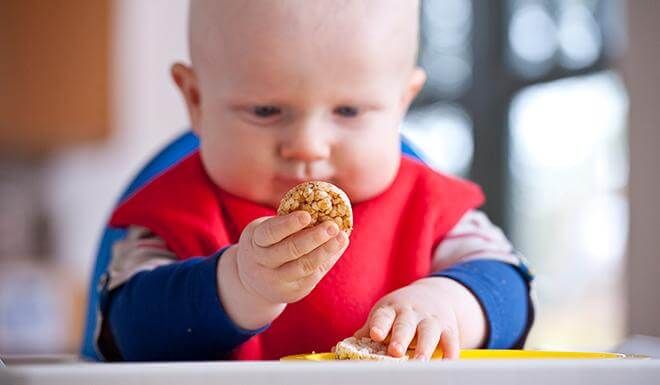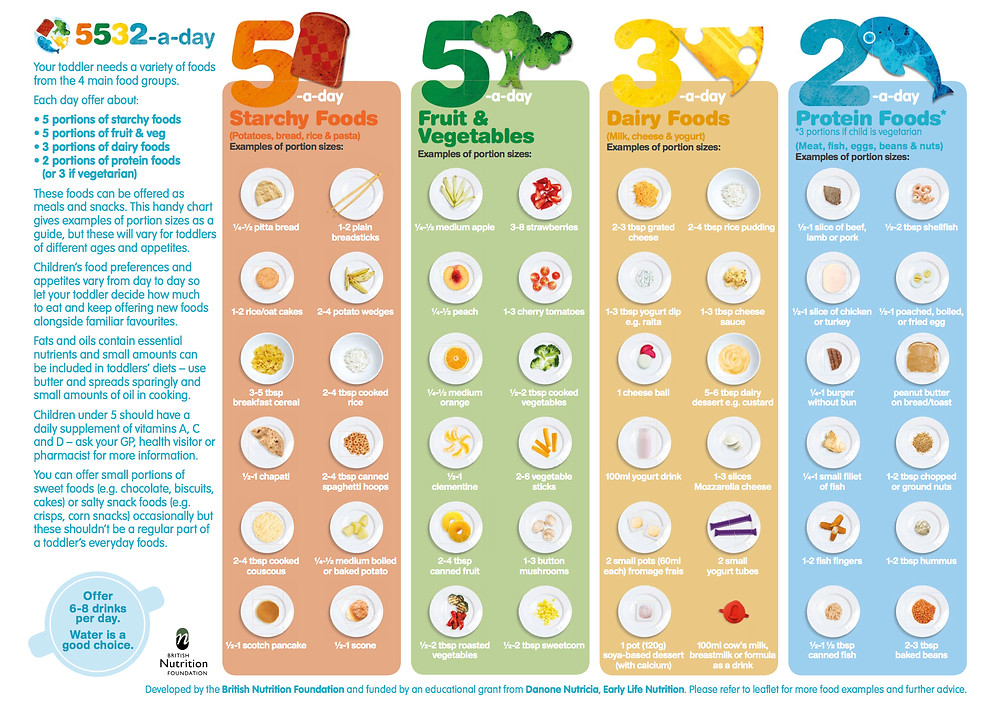Can you bottle feed a baby rabbit
Caring for Newborn Baby Rabbits
IF THESE ARE WILD BABIES
It’s that time of year again. Wild babies everywhere. But are they at risk?
Wild rabbits hide their nests in plain view, often in the middle of your yard, bushes, etc. If you find a nest that has been disturbed, do the best you can to restore it and leave the babies in there. If a dog discovers the nest, do your best to restore it (with grass, leaves, whatever mama has used), make sure the kits are in there, and find a way to keep the dog(s) away from the nest. Mama will return for her babies and taking them away will seriously decrease their chance of survival. If you do not see the mama—DON’T WORRY—they only nurse their babies a few minutes a day, then they stay away so as to not draw predators to the nest.
If a kit is injured or an animal brings you an injured baby, if you have no choice but to help a baby, please do not try to care or it yourself—-get it to a rabbit vet or a wildlife rehabilitator
- Local wildlife rehabilitator: https://www.
nwrawildlife.org
- List of rabbit vets: http://rabbit.org/vet-listings/
The best thing you can do for wild babies is to leave them alone (restored to the nest) or, if injured, get them to a rabbit vet or wildlife rehabilitator.
DOMESTIC/PET RABBITS
WHERE TO PUT THE BABIES
Make the babies a soft nest area in a box with clean towels. We like to put one folded towel on the bottom and another bunched on top of that, so the babies can snuggle into it. You can also purchase soft nesting wool from a pet store and put that on top of the towel. You can also take whatever nesting material they were in and put it in the box as well. Cover the box almost entirely with a light towel, making sure that there will be enough air so the babies do not suffocate. Leaving about a one inch gap at the top is usually sufficient. Keep the babies in an out-of-the way, QUIET area, such as an adult’s bedroom. If the room temperature is between 68-72 degrees you will not need to provide extra heat, but if it’s cooler than that you will need to provide extra warmth. Use a heating pad set on low and slip it under one half only of the box. We do it this way so that the babies can move to a cooler area if it gets too warm. DO NOT put babies directly on heating pad, as babies can burn themselves very badly.
Use a heating pad set on low and slip it under one half only of the box. We do it this way so that the babies can move to a cooler area if it gets too warm. DO NOT put babies directly on heating pad, as babies can burn themselves very badly.
If the babies were with their mamma, but she is not caring for them (and you are sure she is ignoring them) you may need to separate her from them so they will not get hurt. Rabbit milk is very caloric and the kittens (baby rabbits) only nurse for a few minutes a day, so if you think that she is not caring for them based only on the fact you don’t see them feed…think again. If you do think they are being neglected, you can check: Are they cold? Are they making crying sounds for more than a few minutes before (or at) feeding time? Are they blue? Is the skin shriveled? Check for dehydration: gently pinch together the skin at the nape of the neck. If it sticks together or stays in a tent, they are dehydrated.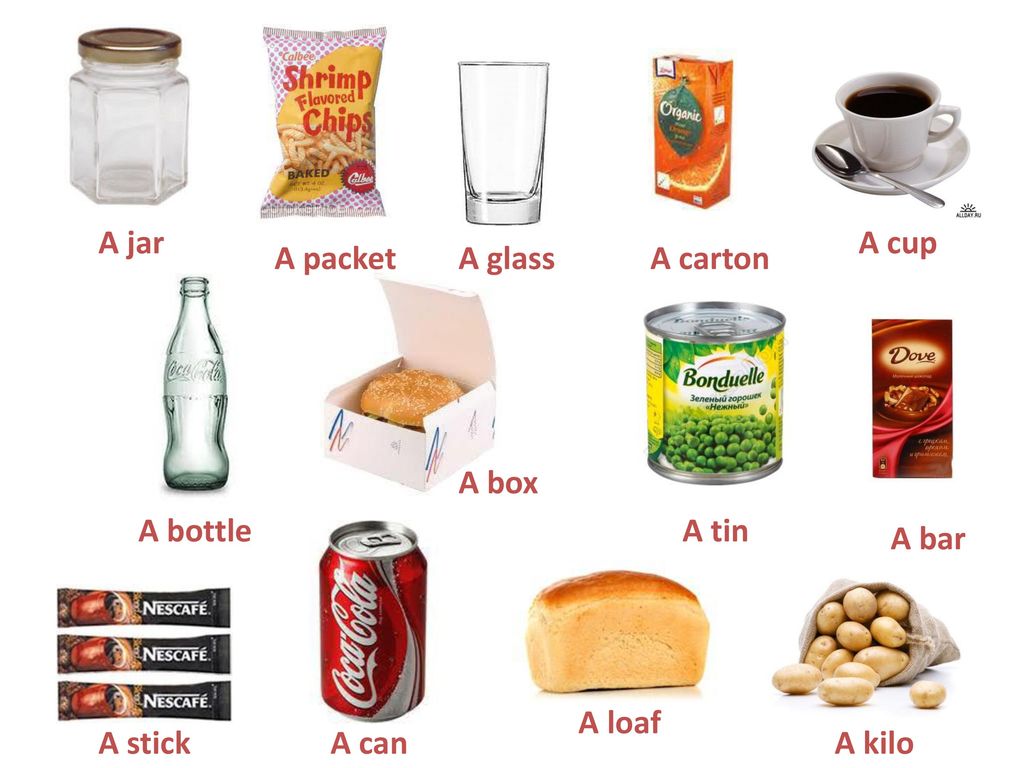 A healthy kit has a round belly, is warm, gains weight on a daily basis, and snuggles with its litter mates. If they are dehydrated, cold, losing weight or becoming injured, of course, something must be done
A healthy kit has a round belly, is warm, gains weight on a daily basis, and snuggles with its litter mates. If they are dehydrated, cold, losing weight or becoming injured, of course, something must be done
WHAT TO FEED THE BABIES
Baby rabbits should be fed Kitten Milk Replacer (KMR) or goat milk, which you can buy at pet stores, or sometimes even a local veterinarian’s office. Because rabbit milk is the most caloric of all mammals, we add in one tablespoon of 100% heavy whipping cream (no sugar) to each can of KMR. Most kits will not nurse from the baby animal bottles you can buy at stores. Instead, use a sterile oral syringe, which can be purchased at most pharmacies. A better alternative are these nipples, which come the a syringe, but you may not be able to find them locally/right away (link).
It is best to feed baby rabbits no more than twice a day, but sometimes it takes more feedings to get an adequate amount into them, especially at first.
How much to feed varies greatly on what breed of rabbit you are feeding, and how big the kit is, but here is a basic guideline for the daily amount to feed a domestic rabbit who will be approximately 5-6 pounds as an adult (average rabbit size). You can increase the amounts as needed for larger breeds.
To help the kits maintain healthy gut bacteria, go to your local health food store (and get a bottle of ACIDOPHILUS. Ask for the capsules that have the “grainy stuff” inside (they are easier to mix than the “powdery stuff”) and add a bit to the formula at each feeding.
ALL amounts below should be divided into two feedings per day.
- Newborn – 1 week
- 4-5 cc formula
- 1-2 weeks
- 10-15 cc formula
- 2-3 weeks
- 15-30 cc formula
- 3-6 weeks, until weaned
- 30 cc formula
HOW DO I DO THIS?
Baby rabbits feed from their mothers while lying on their backs. You may loosely wrap baby in a soft face cloth or hand towel and lay it on your lap or in the crook of your arm. If bunny will NOT eat this way, of course, do the best you can. It is ABSOLUTELY CRUCIAL to let the baby eat at it’s own pace—especially if it is not suckling from the syringe willingly. If you squirt the liquid in too quickly you can aspirate (get liquid in) the lungs and the rabbit will suffocate.
You may loosely wrap baby in a soft face cloth or hand towel and lay it on your lap or in the crook of your arm. If bunny will NOT eat this way, of course, do the best you can. It is ABSOLUTELY CRUCIAL to let the baby eat at it’s own pace—especially if it is not suckling from the syringe willingly. If you squirt the liquid in too quickly you can aspirate (get liquid in) the lungs and the rabbit will suffocate.
Until their eyes open (10 days): After each feeding it is important to make the bunny defecate and urinate to keep the intestinal tract and urinary system running smoothly. Use a soft cloth or a cotton ball moistened with warm water and gently stroke the genital area until the bunny starts producing stool and urine. Keep stroking until the bunny stops. You are replicating the behavior of the mother rabbit who would lick her young to stimulate them to go to the bathroom. The stool will be soft and may be varying shades of green and yellow. If the urine is brown and gritty, the buns are not adequately hydrated and you need to get them to a rabbit vet ASAP—-it is an emergency. Be sure to clean baby’s mouth with a damp cloth or paper towel, so that no milk dries in the hair.
If the urine is brown and gritty, the buns are not adequately hydrated and you need to get them to a rabbit vet ASAP—-it is an emergency. Be sure to clean baby’s mouth with a damp cloth or paper towel, so that no milk dries in the hair.
Baby rabbit eyes open at about 10 days of age. You may start introducing them to hay and pellets at this point, but no veggies or fruits yet. Just leave some timothy or orchard and alfalfa hay and pellets in a corner of the box where the babies can easily get to them. Make sure it the pellets are plain, high fiber and fresh, with no added goodies such as dried banana chips or seeds. Don’t ever leave a deep water dish in which a baby could drown; instead, use something shallow and rinse and fill it frequently.
If you have any questions, please contact us.
Care and Feeding of Orphaned Domestic Rabbits
RABBIT HEALTH: Care and Feeding of Orphaned Domestic Rabbits D.
D.University of Miami Biology Department
The following information is for DOMESTIC RABBITS ONLY. If you are concerned about apparently orphaned wild rabbits, please link to this site on wild baby cottontails, which are completely different in their needs.
Before you take the baby domestic rabbits into your care and attempt to bottle feed them, please consider...
Unless the mother rabbit is known to be dead, there is a good chance that she is feeding her babies, even if she seems to be ignoring them. A mother rabbit does not constantly tend to her babies the way a mother carnivore does. Rabbit mamas feed their babies only twice per day, and then leave them alone. This is normal and natural: in the wild, a mother rabbit not in the process of feeding her offpsring stays as far away from the nest as possible to avoid attracting predators to her babies.
If mama rabbit seems to be "ignoring" her litter, check their condition before you interfere. If the babies' tummies are round and full-looking (you sometimes can see a whitish patch where the milk-filled stomach shows through the thin skin of the belly), they are warm, their skin is a healthy, dark pink, and not overly wrinkled, and they are sleeping calmly in the nest, then mama is feeding them. If the babies are very wrinkled, cold, bluish in color, have shrunken bellies, and perhaps are even crawling around looking for mama (instead of nest-sleeping, as a well-fed baby should), then you may have to intervene.
If the babies' tummies are round and full-looking (you sometimes can see a whitish patch where the milk-filled stomach shows through the thin skin of the belly), they are warm, their skin is a healthy, dark pink, and not overly wrinkled, and they are sleeping calmly in the nest, then mama is feeding them. If the babies are very wrinkled, cold, bluish in color, have shrunken bellies, and perhaps are even crawling around looking for mama (instead of nest-sleeping, as a well-fed baby should), then you may have to intervene.
Before handling the babies, wash your hands well with disinfectant soap and hot water. Your hands are covered with bacteria, no matter how clean they may seem, and these can be dangerous to babies whose immune systems are not yet mature enough to control bacterial growth, should harmful microbes be ingested. Once they're clean, rub your hands in a bit of clean, fresh hay and on mama's fur to scent your hands.
If the mama bunny is healthy and active, put the babies in a secure nest box in a place easily accessible to her. The box should be shallow and long enough for mama to jump in without stomping on her babies, but too tall for the babies to accidentally crawl out. Line the bottom of the box with a soft towel (no loose strings or holes! These can tangle around tiny necks or limbs and cause life-threatening injury or death!). Place a thick (3") layer of soft, grass hay or straw on top of the towel, and make a small "well" in the hay. If the mama has already built a nest of her fur, place the fur in the "well" and gently transfer the babies into the nest. If she did not pluck any fur for a nest, and if she is calm, you may be able to gently clip some away from her chest (Not too much! A handful is fine.) and line the well of the straw nest with it.
The box should be shallow and long enough for mama to jump in without stomping on her babies, but too tall for the babies to accidentally crawl out. Line the bottom of the box with a soft towel (no loose strings or holes! These can tangle around tiny necks or limbs and cause life-threatening injury or death!). Place a thick (3") layer of soft, grass hay or straw on top of the towel, and make a small "well" in the hay. If the mama has already built a nest of her fur, place the fur in the "well" and gently transfer the babies into the nest. If she did not pluck any fur for a nest, and if she is calm, you may be able to gently clip some away from her chest (Not too much! A handful is fine.) and line the well of the straw nest with it.
Make sure mama sees the babies in the nest and can easily join them. Place the box and mama in a quiet, private place (a clean, disinfected bathroom with a baby gate in the doorway is a good choice) and let her get acquainted with her surroundings and her family's location.
Place the box and mama in a quiet, private place (a clean, disinfected bathroom with a baby gate in the doorway is a good choice) and let her get acquainted with her surroundings and her family's location.
If the mama has been separated from the babies for more than 24 hours, and refuses to feed them, you can try to gently, but firmly hold her over the babies until they can get a meal. Stroke the mama, talk to her gently and love her, making her feel secure. After the first feeding, you probably won't have to do this again. She will take care of the babies on her own.
If the mother rabbit is very ill, dead, or exhibiting aggression towards her babies, you may have to remove them and feed them without her help. Before you take on this formidable task, consider the following:
- Did the babies get any mother's milk? If not, you'll have to provide the babies with a special, immunoglobin-rich substance called colostrum.
 For the first few days of lactation, a mother mammal produces colostrum, which contains antibodies that help destroy foreign bacteria. Without a colostrum "starter", the babies have a lower chance of survival.
For the first few days of lactation, a mother mammal produces colostrum, which contains antibodies that help destroy foreign bacteria. Without a colostrum "starter", the babies have a lower chance of survival.
If the babies really are orphans or have been abandoned by their mother, here's a protocol that's been successful for us.
1. Keep the babies in a warm (about 75o - 78o Farenheit), quiet place in a nest similar to the one described above. (Bunny fur is the best lining, but clean cotton wadding will do as a substitute. Just be sure the babies do not get tangled in it.) DO NOT use an electric heating pad. Two or more babies usually are able to snuggle and keep each other warm if they have a good, padded nest. If there's only one baby, a warm water bottle wrapped in a soft towel can provide an excellent artificial heat source, but be sure the baby can crawl away from the bottle if it feels too warm.
2. The nest box should be at ground level, in a room where small children and pets are not allowed (at least until the babies are eating solid food and out of the nest). For the first few days, keep the room relatively dimly lit and quiet.
The nest box should be at ground level, in a room where small children and pets are not allowed (at least until the babies are eating solid food and out of the nest). For the first few days, keep the room relatively dimly lit and quiet.
Feeding the Babies
Formula and feeding supplies
You will need:- plastic sterilizing steam bag (available at most pharmacies, these are used by women to disinfect breast pumps and other nursing materials)
- very small nursing nipples
- There are many different types, and unfortunately few pet supply stores carry the smallest nipples that are best for baby rabbits. If your local pet supply store doesn't carry nipples suitable for baby squirrels and rabbits, then the ones for kittens are the next best thing.
- nursing bottle or syringes
- The type of bottle or syringe you buy will depend on the nipples available in your store. They usually are paired. A variety of feeding supplies are available online from The Squirrel Store.
 Order them while you use the kitten supplies locally available, and you'll have better nipples and syringes in a few days.
Order them while you use the kitten supplies locally available, and you'll have better nipples and syringes in a few days. - Formula recipe
- fresh, whole goat milk - 1/2 cup
- KMR (Kitten Milk Replacer by PetAg) - 1/2 cup
- lyophilized (freeze dried) colostrum - contents of 10 capsules, or 1-1.5 Tablespoons
- This is available at most high-quality health food stores, either in bulk powder form, or in capsules. It's expensive, but will give the babies their best head start.
- heavy cream - 3 cc (a cc is the same as one ml, or milliliter), equal to about 1/2 teaspoon
Heat the formula to about 105o Farenheit (you can gauge this with a common, quick-read plastic rectal thermometer (unused, or fully sterilized!) from any pharmacy.
Feeding Procedure
The most important thing to avoid is aspiration (inhalation) of formula by the babies. The smallest drop of formula in the lungs can cause fatal pneumonia within a few hours.- 1. Steam disinfect all syringes, bottles, and nipples as per instructions on the disinfecting bag.
- hold the baby very firmly between your palms, one on each side of the rabbit
- stabilizing the back and neck firmly so they do not move at all, raise the baby above your head, so his nose is pointing skywards.
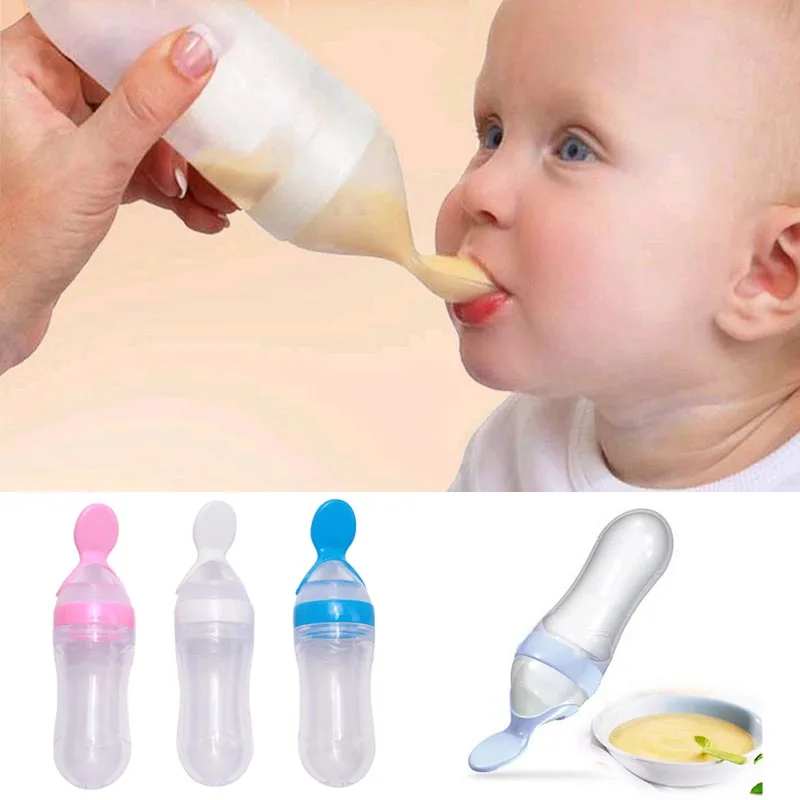
- with a firm, downward motion (not too fast!), swing the baby downwards towards your feet, (being very careful not to come too close to the floor!)
- repeat the procedure two or three times, as necessary. The weight of the baby's internal organs pressing against the diaphragm when you swing downwards ususally provides enough pressure to expel air from the lungs, as well as the drop of milk blocking the airway.
- Once you feel the baby begin to move, STOP THE MANEUVER IMMEDIATELY.
- Consult with your veterinarian about whether or not to place the baby on prophylactic antibiotics to prevent aspiration pneumonia.
2. Sit or lie on the floor to feed the bunnies, using a towel as a lap cushion for the baby being fed. Baby rabbits are wiggly, and unpredictable. They jump suddenly and unexpectedly, and you must be on the floor so that they don't hurl themselves off a chair or table and injure themselves. A drop of only one or two feet can be fatal, especially if the baby has a stomach full of milk.
3. Hold the baby horizontal in one hand, and the bottle/syringe in the other. If you wrap the bottle in a washcloth or cotton pad, allowing a fold to drape over your hand with the nipple protruding, the baby will be able to "paddle" with his front feet, as he would his own mother's breast.
5. DO NOT SQUEEZE TOO MUCH FORMULA INTO THE BABY'S MOUTH! It's better to err on the side of caution than to have the baby inhale milk!
6. Baby rabbits may lose the suckling reflex in only a day or two. If the baby grabs the nipple and begins suckling, allow him to do so without adding any pressure yourself. DO NOT squeeze the nursing bottle or put pressure on the syringe plunger. The baby should be able to suckle with enough strength to empty the bottle or syringe (as long as the plunger is adequately lubricated in advance with a bit of pediatric simethicone suspension) without any help from you. If you provide extra force, the baby may accidentally aspirate formula that's coming in too fast!
The baby should be able to suckle with enough strength to empty the bottle or syringe (as long as the plunger is adequately lubricated in advance with a bit of pediatric simethicone suspension) without any help from you. If you provide extra force, the baby may accidentally aspirate formula that's coming in too fast!
7. If the babies do not suckle, it's not a major problem. Most will learn to lap/sip from the tip of the nipple, and this is actually safer, in terms of reducing the risk of aspiration. Try to hold the nipple sideways or downpointed, relative to the mouth, to further reduce the risk of aspiration.
8. IN CASE OF ACCIDENTAL ASPIRATION. We hope this doesn't happen, but if the baby does aspirate formula, it can completely block the airway and cause the baby to pass out. This does not have to be a death sentence, but the following "Bunny Heimlich" maneuver is the only hope of saving the little one. And it's scary.
9. Until they open their eyes (at about the age of 10-12 days), handle the babies as little as possible when you're not feeding/grooming.
How much to feed?
The following information on feeding quantities are from the House Rabbit Society FAQ on Feeding Orphaned Baby Rabbits, which is an excellent source of additional information on this topic.
- NOTE: Many newborn mammals cannot urinate/defecate on their own. The baby bunnies will require the stimulation of the mother's grooming tongue on their bellies and ano-genital region in order to release a stream of urine and those pinhead-sized poops. Fortunately, you do not have to use your tongue.
Use a cottonball (or even a very clean and disinfected fingertip) moistened with warm water, and gently tap/rub the urogenital area until you feel the baby's abdominal muscles tense and get that rewarding stream of warm pee! (Now you see why we suggest you use a towel on your lap.) Getting a urination response may take 15-20 seconds of stimulation, or even more. Many sources recommend doing this before feeding, and if it works--fine. However, sometimes the stimulus of a full stomach makes this easier. If the baby will not urinate before feeding, try again after feeding, and you will likely get a good response.
Failure to stimulate the babies to urinate/defecate can in the death of the baby (the bladder can actually rupture if it is not stimulated to empty!), so be sure you do this procedure diligently, gently, and patiently! It may take a couple of weeks before the babies are able to urinate and defecate on their own. Watch for signs of redness/irritation around the anus and uretrhal opening, which indicate you are stimulating too vigorously. Back off on the pressure, and apply a bit of soothing calendula ointment (available at health food stores) to heal the irritation.
If the feces come out liquid or "smeary", it's a sign of potentially serious trouble. Consult your rabbit-experienced veterinarian at the first sign of diarrhea, as this can be fatal in only a few hours in a baby rabbit.
- NOTE: Do not allow a baby rabbit overfeed at one sitting! Once a baby learns the Turbo Suck (tm), he can suckle so quickly that it's possible for him to ingest a volume too great for his little tummy.
 Although it's unlikely for the stomach to rupture, stretching it too taut can cause pain, gas, and make the baby sick. It is better to underfeed slightly than overfeed. If in doubt, let the baby rest for about a minute after feeding, then offer the nipple again. This gives time for the stretch receptors to respond and let the baby know he's really full.
Although it's unlikely for the stomach to rupture, stretching it too taut can cause pain, gas, and make the baby sick. It is better to underfeed slightly than overfeed. If in doubt, let the baby rest for about a minute after feeding, then offer the nipple again. This gives time for the stretch receptors to respond and let the baby know he's really full.- NOTE: At the age of about three weeks, babies will begin to experiment with solid food. Not only is it important to continue enriching the formula with colostrum, but at this stage it is time to inoculate them with normal rabbit bacterial flora from a healthy, parasite-free adult rabbit.
 Start to scout for a potential cecotrope donor when you first take the babies into your care. When they're about 2.5 - 3 weeks old, obtain a fresh cecotrope and mix it into a small quantity of formula. You will probably have to feed this as if it were medicine, as most babies do NOT enjoy this "special" formula. But it will help to establish their normal flora at a time when the stomach pH is likely not to interfere with proper colonization of healthy bacterial flora farther down the intestinal tract. Inoculation for 2-3 days in a row seems to be sufficient for establishment of normal flora.
Start to scout for a potential cecotrope donor when you first take the babies into your care. When they're about 2.5 - 3 weeks old, obtain a fresh cecotrope and mix it into a small quantity of formula. You will probably have to feed this as if it were medicine, as most babies do NOT enjoy this "special" formula. But it will help to establish their normal flora at a time when the stomach pH is likely not to interfere with proper colonization of healthy bacterial flora farther down the intestinal tract. Inoculation for 2-3 days in a row seems to be sufficient for establishment of normal flora.Weaning
A domestic rabbit feeds her babies for about 8 weeks, gradually decreasing the frequency of feedings until they lose interest. Your baby bunnies will start to nibble on pellets and solid food at about the age of two to three weeks, but this does NOT mean they are ready to be weaned. In fact, it's even more important that you continue feeding colostrum-enhanced formula to help control the growth of potentially harmful pathogens as the babies introduce new bacteria into their systems.
If the babies still beg for nursing by the age of six - eight weeks, you can begin to dilute the formula with clean drinking water. Start with 25% water to 75% formula, and gradually decrease the percentage of milk until the babies lose interest. It's less traumatic for you and the babies to gradually wean them this way. (And it's a great little trick taught to me by my own pediatrician father, Geza J. Krempels, M.D.)
Visit H.A.R.E., Inc.
Visit the National House Rabbit Society
Feeding baby rabbits: features, tricks, tips
Mother feeding for the most part falls on the first three weeks of life of baby rabbits. Find out what to do if an unforeseen situation happens and the babies are left without a mother.
From three to six weeks old, baby rabbits need less milk and more pellets and hay. During the period when the rabbits no longer need mother's milk, they are weaned.
The physiologically reasonable weaning age is 3.5‒4 months and if you have a rabbit of this age at home, you can immediately give him roughage, additional milk feeding is used only if he suffers from malnutrition. At home, the rabbit is allowed to nurse her babies longer - up to the age of 6-7 weeks.
Loss of a nurse
Sometimes unforeseen situations happen - the death of a female or mastitis, aggressive behavior or refusal to feed the cubs. Whatever the reason, from now on, the care of the rabbits falls entirely on the shoulders of a person.
Further actions depend on the age of the rabbits and the presence of another female who can be entrusted with feeding them. Read this article to learn how to properly transfer babies to a foster mother.
If it is not possible to transfer the cubs to another female rabbit, they are artificially fed and some important points must be taken into account.
As sad as it is to admit, the survival rate of motherless rabbits, if their eyes have not yet opened, and this is the age of 10-12 days, is very low. Mortality with inexperienced care can reach 80-90%. This means that out of ten rabbits, one or two survive.
Mortality with inexperienced care can reach 80-90%. This means that out of ten rabbits, one or two survive.
There are many reasons for this catastrophic mortality rate, the main ones being:
Before rabbits begin to eat roughage, there are no bacterial populations in their intestines. If, during artificial feeding with milk formula, bacteria that are abnormal for rabbits of this age are introduced into the body, which can be caused by dirty hands or unsterilized nipples and bottles, this causes severe intoxication and indigestion. Diarrhea is one of the most common causes of death in rabbits.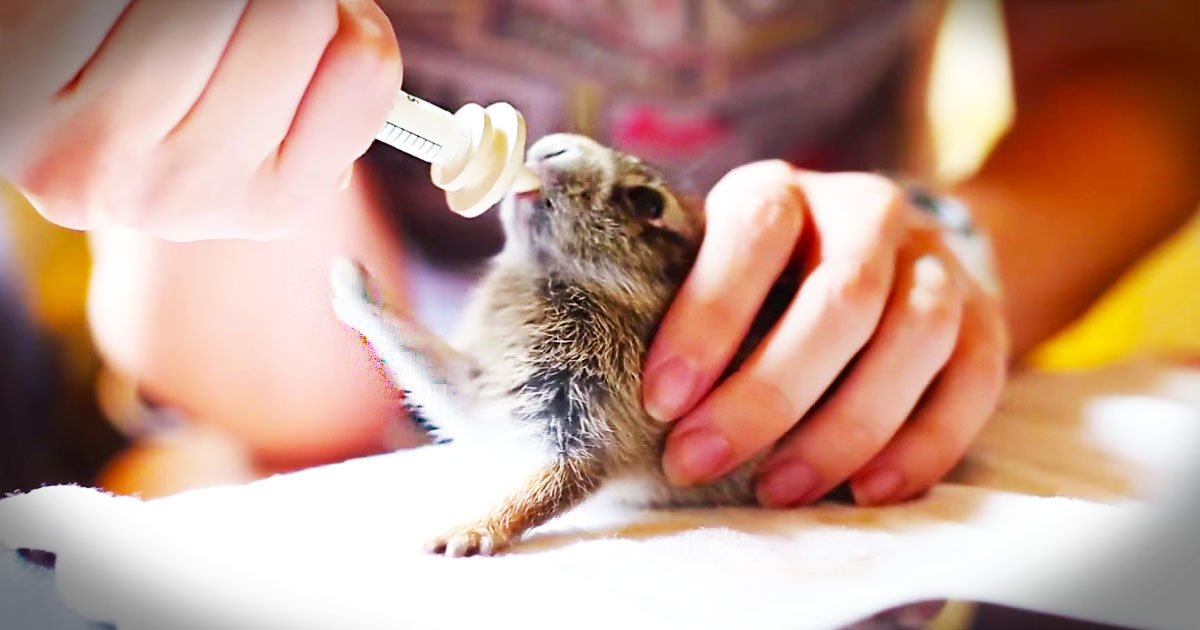
Feeding supplies
Buy plastic teat bottles first. Since they are usually sold in pairs or as a set of a bottle and several nozzles, it is important to find the smallest nipples, and which bottle is not a big deal.
If you can get special teats for rabbits, great, if not, kittens will do. As one of the components, a milk replacer for kittens is introduced into the formula for feeding rabbits, and some manufacturers include a bottle with nipples in such a set, which is quite convenient.
Keep in mind that pet sellers often refer to rabbits as rodents or animals. So look for the products you need in one of these sections.
Special plastic syringes with silicone or rubber tips are successfully used.
As an exception, try using a regular eyedropper or eye dropper bottle.
Successful rearing of young rabbits is not an easy task. Rabbits have a complex digestive system, and babies are even more vulnerable. Below is a universal formula formula for suckers of all ages.
For preparation take:
- fresh whole goat milk - 100 g
- kitten milk replacer - 100 g
- colostrum (lyophilized colostrum) - 10-15 capsules (1-1.5 tablespoons)
Colostrum is an expensive ingredient, but it is almost impossible to raise very small rabbits without colostrum.
Place all components in a glass container, close tightly, then shake vigorously until the contents turn into a homogeneous mass.
Prepare new formula before each feeding. If there are few cubs, you can reduce all components proportionally.
Heat the mixture to 40 °C, it is convenient to check the temperature with a regular thermometer, wipe it with alcohol before use. Keep cooked food in hot water until you have fed all the babies.
For older rabbits (from 14 days old), add up to 1 teaspoon of quality cow's milk cream to the mixture.
Do not use condensed milk - excess sugars, prolonged heat treatment, vegetable fats and other components unusual for natural milk - all this will lead to the fact that the product can do more harm than good.
Cow's milk is inferior in nutritional properties and digestibility to goat's milk, moreover, it has less antibodies and larger fat globules, so it is undesirable to use it for feeding rabbits.
Feeding procedure
Remember, the most dangerous thing that can happen to young rabbits during feeding is inhalation of the mixture. This will lead to instant aspiration when the baby stops breathing and passes out, or to the rapid development of pneumonia. Therefore, when feeding, do not rush, do everything carefully, be leisurely, be patient and follow the steps below.
1. Cleanliness of dishes
Disinfect syringes, nipples and bottles in a special steam sterilizer or by boiling water.
2. Hand hygiene
Wash hands in hot running water with laundry soap (toilet soap is not used due to strong odor) and dry thoroughly.
3. Precautions
When feeding older rabbits, lie on the floor - swift fidgets can jump out of your hands in no time. Place a towel on your knees. Wrap the bottle in flannel, the cub will rest on it with its front paws, as if it were fed by a rabbit, besides, the milk will not cool down.
Place a towel on your knees. Wrap the bottle in flannel, the cub will rest on it with its front paws, as if it were fed by a rabbit, besides, the milk will not cool down.
4. Feeding
Hold the baby in one hand and the bottle in the other. Hold the baby horizontally with the tummy down, in the most natural feeding position, you can slightly lift the front or turn the baby to the side. Successfully feed rabbits in an upright position. No need to lay the sucker on his back - he can choke. It is enough to simply hold the grown-up rabbits with your hand, avoiding choppy movements.
6. Patience
Rabbits, especially very small ones, often stubbornly refuse to suckle, some may take a day or two for the sucking reflex to develop.
It's not surprising that you might want to force-feed the little stubborn one. Don't do this under any circumstances! Be persistent, but be gentle and careful, squeeze out some of the mixture, moisten your mouth and continue to bring the pipette or nipple to it with a drop of milk, encouraging you to lick off the mixture.
Continue like this until the bunny begins to suck on its own. Sometimes it may take several feedings to be successful. If he grabs the nipple and starts sucking, let him eat at his own pace - no need to squeeze the bottle.
What should I do if my rabbit has inhaled the formula and is not breathing?
If a baby rabbit inhales milk formula, drops of it can cause complete blockage of the airways and fainting. Therefore, you need to act very quickly and take urgent resuscitation measures.
Hold the rabbit in both hands, head up, with the palms of your hands firmly on the back and neck, but without squeezing too much. Raise it above your head and lower it down to the floor, moving not very fast, but with determination. Repeat the reception two or three times. The rabbit's insides will rush upward as they move down and push the diaphragm, which may be enough to push air and mixture particles out of the airways. As soon as the rabbit moves, stop immediately.
You will most likely need to administer antibiotics to prevent pneumonia, please consult your veterinarian about prescribing the drug.
Amount of servings, frequency and features of feeding
0–7 days
Newborn rabbits are fed twice a day, in the amount of 2–2.5 ml of milk formula at each feeding.
Very small rabbits will not be able to recover on their own. The female rabbit, while caring for the sucklings, licks them, stimulating muscle contraction, which facilitates urination and defecation.
To prevent overfilling of the bladder and intestines, take the following technique into service.
Rub the tummy, including the anus, with light but firm strokes, as a female rabbit would do. Your task is to stimulate the tension of the abdominal muscles.
The procedure is performed with a finger moistened with warm water, you can wrap it with a damp cloth or use a moistened cotton swab. Manipulation will take from 15-25 seconds to two minutes and you need to continue it until the bladder is empty.
Some breeders find it best to do this before feeding and great if it works, but the extra pressure of a full belly can speed up and ease the process.
Be careful and persistent, sometimes rabbits cannot empty their intestines and bladder without light massage for quite a long time - up to a few weeks of age. Do not rub too hard as this can cause redness and irritation of delicate skin. If redness is still present, use a soothing calendula ointment.
8-14 days
The norm for this period is two feedings per day, 5-7 ml each time.
Don't overfeed your rabbit! Once he understands how the system works, he will eat as much as you give. He may eat so much formula that the tummy will stretch, causing discomfort, indigestion and gas.
It is better to underfeed a gluttonous baby than to overfeed. Well-fed rabbits look round and plump, but not like tumblers with stretched tummies.
In addition, it is important to take into account that the receptors that signal satiety do not work instantly and it takes some time. If the bunny looks hungry and you're not sure he's gotten enough food, wait a minute or two and offer the pacifier again, maybe he won't pounce with the same greed now.
15-21 days
Still two main feedings - 7-13 ml at a time.
By this time the eyes are already open and the rabbits begin to take an interest in what is happening around, including coarse food.
Timothy or oat hay, rabbit pellets and fresh water should now be constantly present in the cage. Rabbits are offered water not in an automatic drinker, but in a shallow bowl or bowl.
Experienced breeders recommend, even before the moment when the rabbits begin to consume roughage, to artificially introduce beneficial microflora into the body.
To do this, choose a donor - a healthy adult rabbit, not infected with helminths, and take some fresh caecotrophs from him (read about what it is here).
The resulting balls are kneaded, mixed with a small amount of milk mixture and fed to the rabbit, who, of course, will not be delighted with such food. Treat this event like giving medicine. This technique will make it possible to populate the rabbit's intestines with healthy microflora, and besides, caecotrophs contain many useful substances. Such an introduction of microflora for 2-3 days will be quite sufficient.
Such an introduction of microflora for 2-3 days will be quite sufficient.
You can replace caecotrophs with probiotics, such as the German Olin or the domestic Zoonorm.
22-42 days
Two feedings of 13-15 ml at a time, the amount of servings may be smaller, depending on the breed and development of the rabbit.
At this time, alfalfa or clover hay is introduced into the diet, as well as granules with a high protein content - 16-18%. You can additionally introduce some sunflower seeds or whole oat grains.
Weaning
A female rabbit feeds her young at home for up to eight weeks or more, gradually reducing the frequency of feedings until the young rabbits lose interest. As early as two weeks, rabbits will begin to gnaw on pelleted food and taste hay, but this is not a reason to stop feeding them a mixture. On the contrary, during this period, in no case should you stop the main feeding.
Colostrum containing useful antibodies will help the rabbits to control the development of microflora, and restrain the growth of potentially dangerous colonies.
From 6 to 8 weeks of age, start diluting formula with clean drinking water. Start by adding a quarter of water, gradually bringing the composition to this proportion: three quarters of water - one part of the mixture. The rabbits themselves will lose interest in feeding, and weaning will not be as traumatic.
Tell us about your experience with baby rabbits. Your knowledge and practical experience are really important and can save a baby's life. Post your recommendations in the comments below or send your material to the Our Stories section.
Social buttons for Joomla
How to feed rabbits without a rabbit
Contents:
- 1 How to feed rabbits without a rabbit.
- 1.1 Artificial rearing of rabbits.
- 1.1.1 Artificial feeding of baby rabbits #1
- 1.1.2 Artificial feeding of baby rabbits #2
- 1.2 Step-by-step description: how to artificially feed baby rabbits
- 1.3 How to make milk replacer for rabbits
- 1.
 4 How often should little orphan rabbits be fed?
4 How often should little orphan rabbits be fed? - 1.5 How to bottle feed orphans
- 1.1 Artificial rearing of rabbits.
It happens that the rabbit dies after giving birth and the rabbits are left without a rabbit. And then the question arises of how to feed the rabbits without a rabbit.
Of course, the best option is to put it with another lactating rabbit (if the difference in the age of the rabbits is no more than 1-2 days). If this is not possible, you can look for nursing rabbits in other nurseries, farms, household plots (by calling them).
If this is not possible, the only option left is to try to feed the rabbits artificially. It is more difficult to feed decorative rabbits than meat ones, there is very little chance. Meat rabbits are more likely to feed than decorative ones.
The first thing to outline (if the female has not made a nest) is to make a nest yourself so that the rabbits are warm. You can just put them in a box (not big) so that they are in a pile, so they keep warm, basking from each other. In a box, any woolen thing under them and on top of them.
In a box, any woolen thing under them and on top of them.
Baby rabbits can not eat for a day, this is normal, often the female starts feeding them the next day after giving birth. Therefore, you have a day to prepare and buy everything for artificial feeding. It is better not to delay feeding for more than a day, as the rabbits can become very weak and they simply do not have enough strength to eat.
Baby rabbits should be fed artificially, 2-3 times a day, at the same time. Before and after feeding, it is necessary to massage the tummy and genitals, so the female licks the rabbits, stimulating them to go to the toilet.
Below are a few ways of artificial rearing of rabbits, which have been tried by breeders and just owners of rabbits, both meat and decorative. It is easier to artificially feed a puppy or kitten than a rabbit. For rabbits, a milk replacer has not yet been invented as for cats and dogs.
Artificial rearing of rabbits.
Artificial feeding is worth resorting to:
- 1.
 When the lactating female (mother of rabbits) died
When the lactating female (mother of rabbits) died - 2. When the female does not have milk (this happens rarely), and even in this case, do not take the babies from the mother ...
Rabbit's milk in its chemical composition is significantly different from the milk of other farm animals. It contains a very high amount of fats and proteins and it is difficult to find an adequate replacement for it.
According to the content of solids, calories, proteins, fats and minerals, rabbit milk is in the first place, this also explains the rapid growth of newborn rabbits, since a large amount of nutrients are supplied to them through milk.
For example, rabbit milk contains four times more proteins than cow's milk, and more than three times more minerals, as a result of which the weight of newborn rabbits doubles on the sixth day, and on the thirtieth they are ten times heavier than at birth .
Artificial feeding of rabbits No. 1
In terms of composition, dog milk is closest to rabbit milk.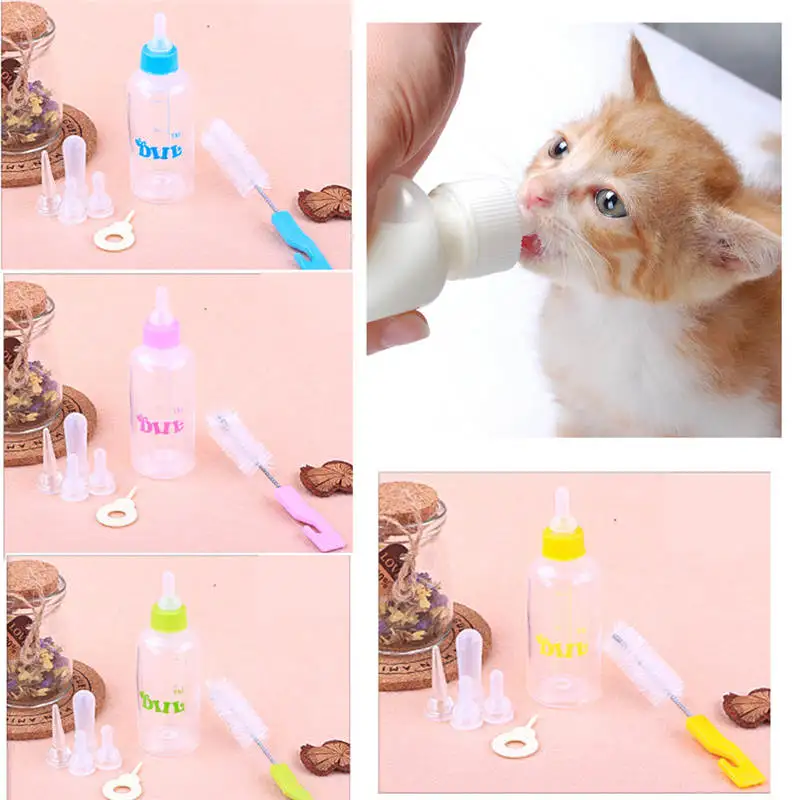 Pet stores sell powdered dog milk.
Pet stores sell powdered dog milk.
The artificial feeding temperature should be approximately equal to the rabbit's body temperature of 37-39°C. It is necessary to cook small portions of food - a maximum of a day. The mixture not used for feeding is stored in the refrigerator, warming up before use.
A pipette can be used as a teat. You need to feed in small portions. When feeding, it is necessary to keep the rabbit upright.
Baby rabbits should be artificially fed for 3-4 weeks. With improper feeding of rabbits, an upset stomach occurs, there may be pneumonia, and in extreme cases, the death of rabbits may occur.
Artificial rearing of rabbits #2
Natural goat's milk, closest in composition to rabbit's, but lower in fat content. If you don't sell milk replacer for dogs or cats, goat's milk can be used naturally. It also needs to be warmed up before eating. Everything should be sterile, wash your hands before feeding.
For very young rabbits, a syringe without a needle is best. In veterinary pharmacies, you can purchase special kits for newborn pets, which include syringes with a set of feeding nozzles. For larger rabbits, a regular pipette will do, then a regular nipple, and finally rabbits at a month old drink perfectly from a bowl.
Decorative rabbits need 1-2 ml per day. the first 3-4 days, then 2-3 ml.
Meat rabbits 3-5 ml. gradually increasing.
Starting from 12-14 days, hay should be introduced slowly (except for milk) and compound feed after 3 days.
Step-by-step: how to artificially feed baby rabbits
Feeding rabbits requires special care and attention so as not to overload their sensitive immune and digestive systems. Follow these steps until the letter:
- Wash hands thoroughly with warm soapy water.
- Follow the instructions provided to sterilize and disinfect bottles and teats.
- Fill bottle with formula, then warm to body temperature.

- Sit on the floor and spread enough pillows under the area where you will feed the rabbits.
- Hold your baby horizontally in your hand and gently bring the bottle nipple to his lips.
- Sometimes the baby rabbit resists bottle feeding; in this case, moisten your lips with a drop of the mixture and be persistent.
- DO NOT try to squeeze the mixture out of the bottle! The last thing you need to do is to overfill the rabbit's mouth, causing it to breathe in the mixture.
That's it! Over time, the kids will get used to your feeding and stop fussing. For the first three weeks of their lives, they will rely solely on formula for nutrition.
From 3 to 6 weeks you will notice that they start to try solid foods. This will form the basis for weaning them from the bottle, but they will still need the nutrients in the formula until around 8 weeks of age - after which you can safely stop feeding them.
How to make milk replacer for rabbits
If you are going to care for a small rabbit, you need to use a special milk replacer for kittens. If this is not possible, you can make this meal replacement at home. To create a homemade rabbit milk replacer, follow this recipe:
If this is not possible, you can make this meal replacement at home. To create a homemade rabbit milk replacer, follow this recipe:
- Pour one cup of goat's milk and add another 56 grams of goat's milk powder.
- Add a tablespoon of unsweetened heavy cream. This will make the mixture richer and mimic the calorie content of rabbit milk.
- Heat mixture to 98-100 degrees Fahrenheit.
These ingredients will satisfy the needs of a young rabbit by replacing mother's milk like its counterpart. However, when in doubt, buy a pre-blended milk replacer.
How often should little orphan rabbits be fed?
The quantity is as important as the quality of the milk. Overfeeding or underfeeding a rabbit is equally dangerous. As a general rule, follow these guidelines when feeding your rabbit. You may have to guess the age if the rabbit was wild.
| Less than 1 week | 2 or 2.5 cu. cc/ml per feeding twice a day |
| 1-2 weeks | 5 to 7 cu. cm/ml per feeding twice a day. cm/ml per feeding twice a day. |
| 2-3 weeks | 7 to 13 cu. cm/ml per feeding twice a day. |
| 3-6 weeks | 13 to 15 cm3 / ml for one feeding twice a day. |
If you follow these guidelines, your rabbit will grow. The maximum time required for breastfeeding is six weeks. However, you may find that your rabbit wants to wean earlier. Encourage it if so.
Rabbits start eating solid food after a week or two. The sooner the rabbit starts eating hay in exchange for fiber, the better. Remember, a rabbit can't eat too much hay. What can not be said about milk mixtures.
How to bottle feed orphans
Visit your veterinarian or pet store and ask for a special pet bottle. It must be completely sterile before use.
- Make your rabbit comfortable and wrap him in a towel if possible. Do not let the rabbit roll onto its back. She should sit upright so as not to fill her lungs with fluid.
